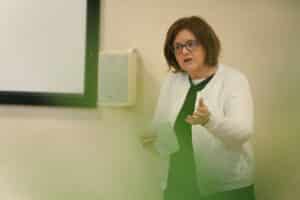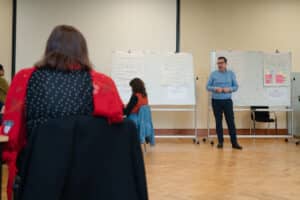On 29th April 2024, DCU Anti-Bullying Centre hosted a ‘Re-Imaging Ethics and Research with Children’ Symposium in the John Hand Room on the All Hallows Campus. Academics, researchers and professionals from various organisations and institutions were in attendance for this knowledge sharing event to discuss current ethical issues faced when conducting research with children.

ABC members were delighted to have Professor Anne Looney, Executive Dean of the Institute of Education, open the symposium to welcome all the attendees and share her hopes for what might be achieved during the event. ABC’s postdoctoral researchers, Sinan, Sayani, Maryam and Megan posed questions amongst groups of attendees to facilitate group discussions on how children can be supported, respected and included within research, as per the United Nations Rights of the Child.

All attendees discussed the current challenges that they face when conducting research with children and how they use dynamic and robust methodologies that respects the rights of the child, but ensures that their voices are heard. Further, attendees discussed how we could effectively move forward the field of ethical research with children. Dr. Melrona Kirrane, Chair of DCU Research Ethics Committee, spoke with attendees on key ethical principles for researchers and the ethical process within DCU. ABC will compile all ideas and thoughts into a report to share amongst attendees and then to wider audiences.
